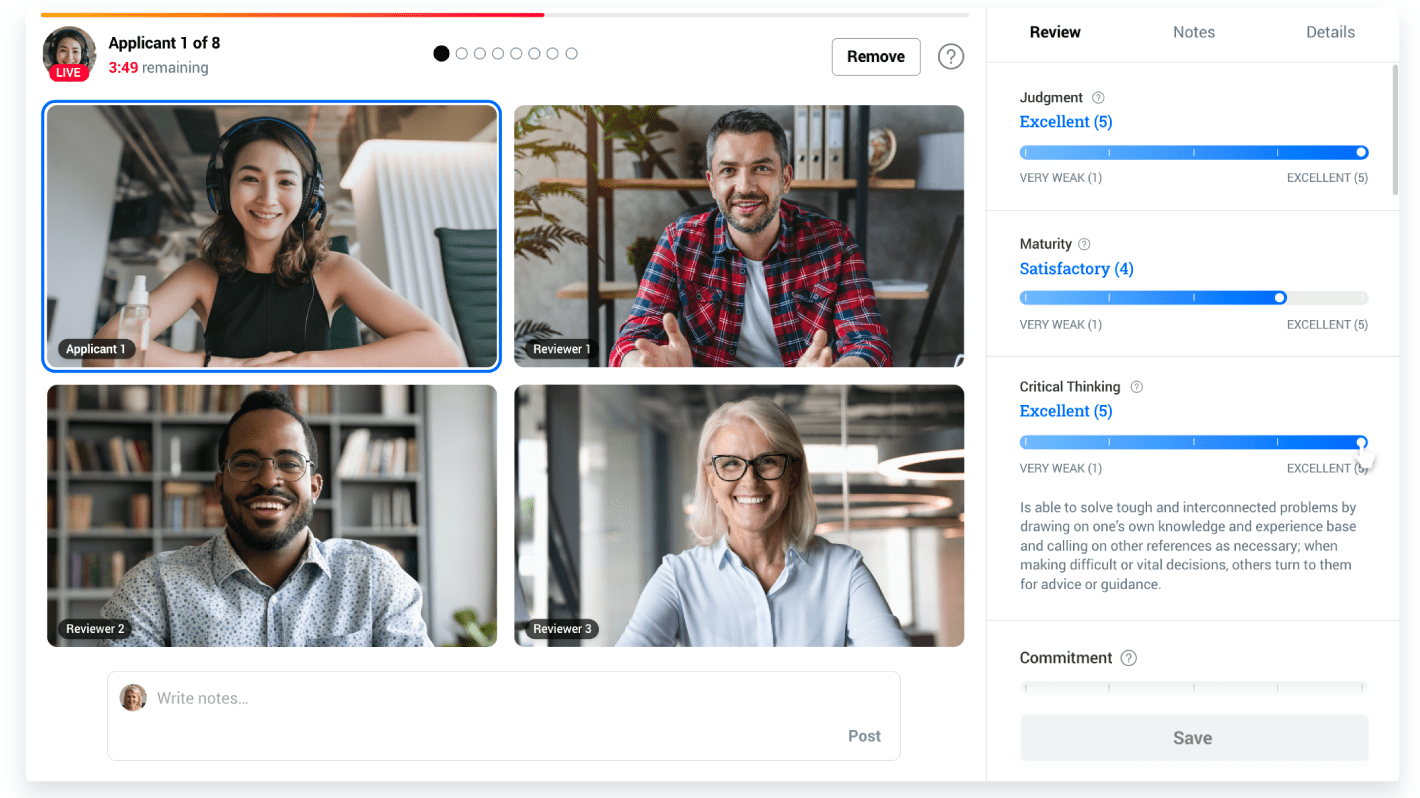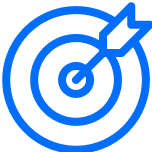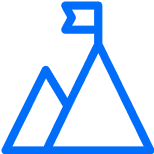The Ohio State University is one of the largest in the United States, boasting more than 60,000 students and a top national ranking. And while its business school is significantly smaller, it’s no less prestigious.
The Fisher College of Business at OSU has less than 800 students enrolled in its various programs. Receiving around 1700 applications a year, securing a place at the school of business can be quite competitive.
“We used to make our admissions decisions based entirely on the paper application,” shared Rob Chabot, Senior Director of Admissions and Recruiting at Fisher College of Business. “We just didn’t have the capacity to conduct interviews, so we didn’t have anything else to go by.”
“Just thinking about that process now gives me heart palpitations.”
That’s why, in 2017, Fisher College of Business began assessing applicants asynchronously with Kira Talent.
Attracting and assessing international applicants
As with any prominent business school, Fisher College of Business attracts many students from overseas.
“Having a way to effectively engage those international applicants is a huge reason why the idea of on-demand assessments in Kira Talent was so attractive to us,” Chabot explained. “It meant that we were able to get a picture of our international applicants beyond their paper application, while still offering them a convenient way to connect with us.”
When Chabot first started at Fisher, the college was relying solely on applicants’ Test of English as a Foreign Language (TOEFL) scores in order to determine if their English language capabilities were strong enough to enable them to succeed in the program. But the school found that a student's abilities on paper didn’t always translate to their abilities in person.
“We frequently noticed a mismatch between the TOEFL scores and the applicants’ fluency once they got into the classroom,” explained Chabot. “It was with this group, the international applicants, that we first started exploring an interview process.”
At that time, the best way of connecting with applicants overseas was through a basic phone interview. Although the technology was simple, the coordination proved to be extremely difficult.
“I would have a small army of student assistants who would do the interviews for us, as, at the time, I was only a one-man admissions team,” shared Chabot. “The nightmare of trying to line up volunteer availability with an applicant’s timezone halfway across the world was maddening.”
With the difficulties coordinating schedules and the time it took to gather and organize feedback from student volunteers, it was common for the college not to get back to applicants with an admissions decision for three to four weeks.
“The process was so clunky,” Chabot shared. “But at least we had something.”
Delivering a more efficient and effective interview
For domestic students, Fisher simply didn’t have the capacity to deliver any kind of interview experience.
“We relied on bits and pieces of data we would capture on the applicant while they were applying,” Chabot explained. “This was gathered through phone calls, emails, and the like, where we were discussing different aspects of the admissions process with them.”
“Instead of getting a full picture of an applicant, we were getting a sort of bizarre jigsaw puzzle of information.”
“It wasn’t consistent, it wasn’t standardized, and it certainly wasn’t providing a comprehensive experience for our applicants,” he continued. “But with the limited resources we had, it was the best we could do.”
“With Kira, we’re now able to efficiently interview around 1200 applicants each cycle,” Chabot shared.
“The on-demand style assessment helps us ensure that every applicant is getting the same experience and no one has a compromised admissions process simply because they’re in a different timezone or had to work around a work schedule,” he continued. “And for our reviewers and admissions team, we’re saving hours of work that used to be spent coordinating interviews and organizing data.”
“In our former processes, we weren’t achieving this level of consistency or efficiency, and now we’re able to support informed and defensible admissions decisions.”
The benefits of a platform designed for you
“When we discovered Kira Talent, the thing that really impressed us was that it was designed for higher education,” Chabot shared.
“Kira wasn’t designed for companies trying to hire applicants or for casual video calls, its purpose was to do exactly what we needed it to do — with no workarounds.”
This was a welcome change for Chabot’s team who had previously been using another video interviewing tool which was predominantly used by businesses for hiring interviews.
“Although they were trying to sell the platform as something that could be used for higher education, there were so many glitches that spoke to the fact that this wasn’t a platform built for us and what we do.”
“The user interface wasn’t good, it wasn’t smooth and was often experiencing technical glitches that just diminished the overall effect and professionalism of the experience,” he added. “It didn’t integrate well with our existing application process, and we had to manually connect the interview with the application one by one.”
“We muddled through that process for a few years because it was better than what we were doing before, but it wasn’t great.”
Seamless, convenient, efficient
“It’s important to us that the interview seamlessly felt like a part of the application,” shared Chabot. “We didn’t want something that the applicants, or our team, had to deal with like it was an add-on or additional step after they had already done all this work.”
“Kira met and exceeded our goal of having the interview become an integrated and seamless part of the overall admissions process.”
“The Kira assessment is accessible wherever you are, whenever you want it, which has resulted in a much quicker turnaround on file reviews,” Chabot continued. “There isn’t any running around anymore trying to arrange a time to chat and figure out the time zones.”
With Kira’s competency-based approach, Fisher College of Business is also ensuring that applicants are getting assessed fairly and on the skills most applicable to their program.
“We wanted consistent questions presented in a consistent format so that we could ensure we were comparing apples to apples,” shared Chabot.
“Being able to distinguish the best candidates is much easier because we’re actually able to assess their responses to comparable questions.”
“For any cases where we’re on the fence about an applicant, we can easily share a link to their recorded responses and get another perspective and some additional feedback and insight on that applicant.”
The first choice of leading business schools
“One of the biggest reasons we originally chose to move our interviews to Kira Talent was because we had spoken to peer schools who were already using the platform and were beyond pleased with their results,” shared Chabot.
“The level of guidance and support provided by Kira is unparalleled,” he continued. “Our Client Success Manager made sure to understand what we were looking for in our ideal candidate for each program, helped us curate questions and rubrics that best identify those qualities, and then helped us integrate the assessment into our application process.”
“Getting all of that setup helped make the process much more engaging and consistent for our applicants, and much easier for us as we reiterate and enhance our process year over year,” Chabot added.
Kira managing all reviewer and applicant technical support freed up Chabot and his team to focus on engaging more deeply with their applicants.
“Whether it’s questions from reviewers or applicants, they go straight to Kira and Kira works with them directly to answer the question,” he explained.
“That whole middle piece – coordinating schedules, conducting the interviews, assisting applicants and reviewers through the process – that used to take up so much of our time and resources is now handled entirely by Kira.”
“That support was something that I didn’t notice was missing with our old process,” Chabot shared. “But having now experienced the difference working with Kira, I’d never go back.”
Discover how more business programs are enhancing their admissions processes with Kira Talent






